After the storm: Asheville’s road to recovery after Hurricane Helene
How residents of this Appalachian city set out to rebuild their economy – and community – in the wake of disaster
“That was a coffee shop and on the other side of that wall was a yoga studio,” says Joe Balcken. The co-owner of Wrong Way River Lodge & Cabins is showing Monocle around the River Arts District (RAD) in Asheville, North Carolina, as we survey the damage caused by Hurricane Helene. It’s the first of several times over the next three days that our powers of imagination will be called upon to reconstruct a group of buildings from a pile of rubble. Balcken owns a set of 16 A-frame cabins that stand on stilts about a kilometre downriver from here. Or perhaps we should say upriver. “The French Broad is one of the few rivers that flows south to north,” says Balcken, with a soft Appalachian lilt. “We call it the wrong-way river, which is where we get our name.”
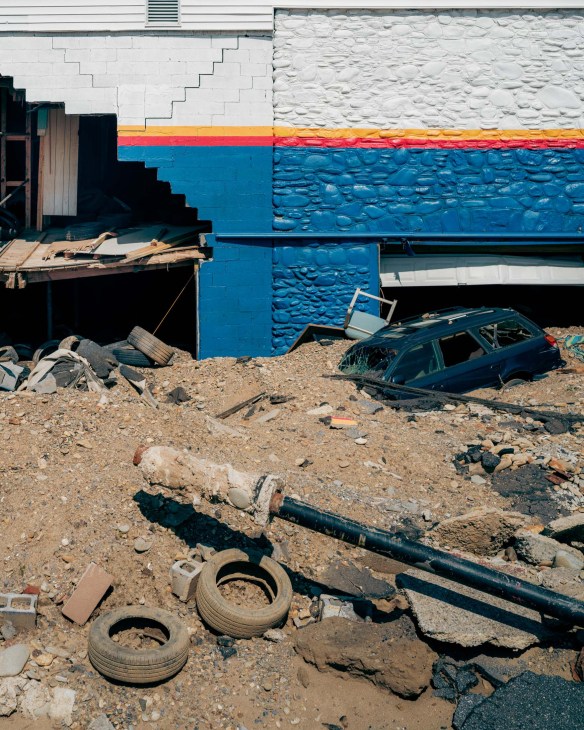
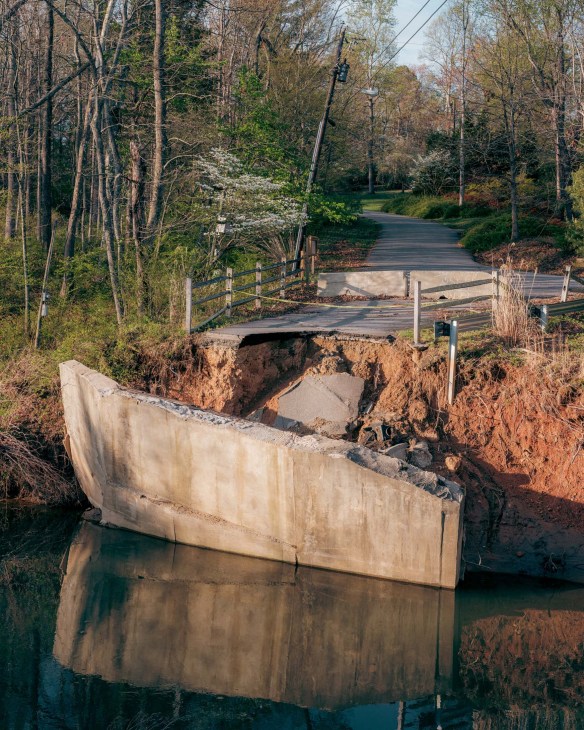
From this corner of western North Carolina the Appalachian Mountains begin their gentle descent towards northeastern Alabama. It’s a land of thickly forested hills that turn smoky blue in the twilight, which has long drawn people from all over the US for whom a life lived among nature is an ideal worth pursuing. Beside a more established Appalachian community that prides itself on rural self-sufficiency, these new residents have created a kind of redoubt against the ravages of modernity. This is a place where people can live outdoors, be creative and still have access to excellent food, culture and healthcare. But on 27 September 2024, a much less welcome newcomer barrelled into town.
“At around 22.00 I started getting phone alerts from the NOAA [the National Oceanic and Atmospheric Administration] and it was alarming,” says Balcken. “They were saying that this would be a historic event, like nothing else we had ever seen. Every colour indicator was in the red for severity and impact.”
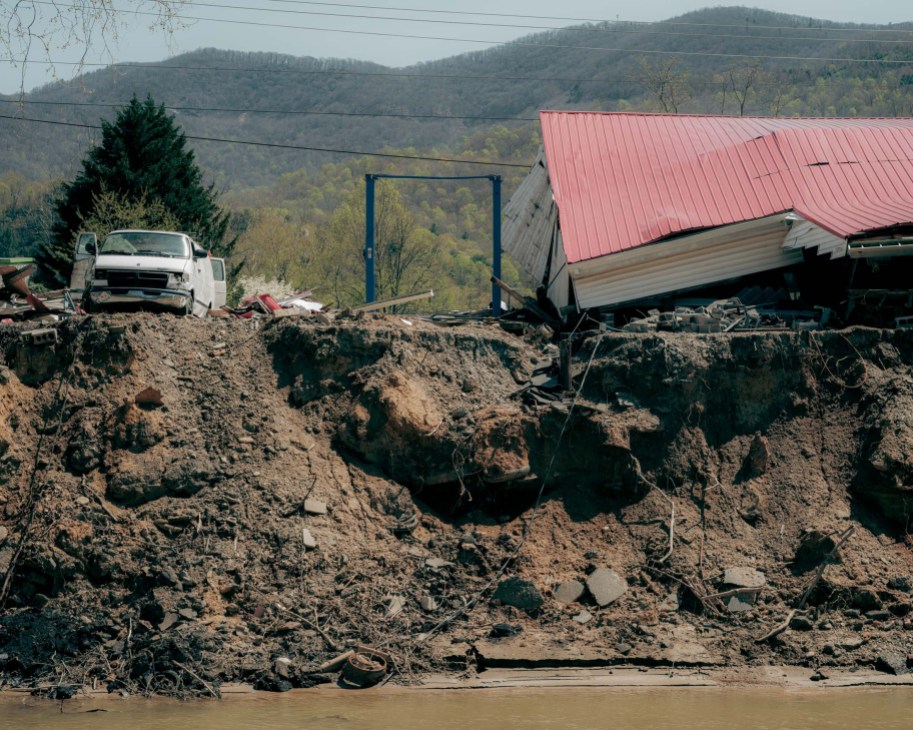

Down in the Gulf of Mexico, Tropical Storm Helene was gathering steam. And as it sped toward the Florida coast, whipping up winds of 220km/h, within 24 hours meteorologists upgraded its severity from a category-1 storm to a category-4 hurricane. Due to record-hot sea temperatures, Helene was able to hold an extraordinary amount of atmospheric moisture, which it unleashed as torrential rain in places at its peripheries, such as Asheville.
At the Grand Bohemian Hotel in the city’s Biltmore Village neighbourhood, general manager Matthew Lehman and his staff were holed up in the reception area. “We just watched the water rise and rise and rise,” he says. “By 10.30 it was two feet deep and we were leaving to go upstairs.” Some areas saw 700mm of rainfall in 24 hours, well above the 420mm threshold that constitutes a once-in-a-thousand-years flood. Both the French Broad and Swannanoa rivers, which converge in Asheville, burst their banks, toppling buildings, uprooting trees and carrying cars and other detritus miles downstream. The city lost running water and power, and telecommunications were knocked out in much of western North Carolina, leading to an information blackout. Whole communities were destroyed. An announcement from Black Mountain police chief Steve Parker reported: “Neighbourhoods are gone from flooding or mudslides. They’re having to leave bodies behind, houses are on fire.” A few days later, the then-governor of North Carolina, Roy Cooper, said that “the devastation brought by Hurricane Helene is beyond belief… Communities were wiped off the map.” The state’s final death toll was 107, more than a third of which were in Buncombe County, the county that contains Asheville.
Monocle visits the city in mid-April, when spring is rearing its leafy head. Though evidence of flooding isn’t difficult to find, downtown Asheville went largely unscathed and Main Street’s bars and restaurants are abuzz. Over the past 20 years or so, the city’s hospitality and tourism-related businesses have come to represent an ever-greater proportion of its economy. According to Explore Asheville, a tourism marketing agency (with which Monocle has collaborated in the past), visitors spent $3bn (€2.6bn) in Buncombe County in 2023, contributing 20 per cent of its total GDP. For these businesses, Helene couldn’t have come at a worse time.
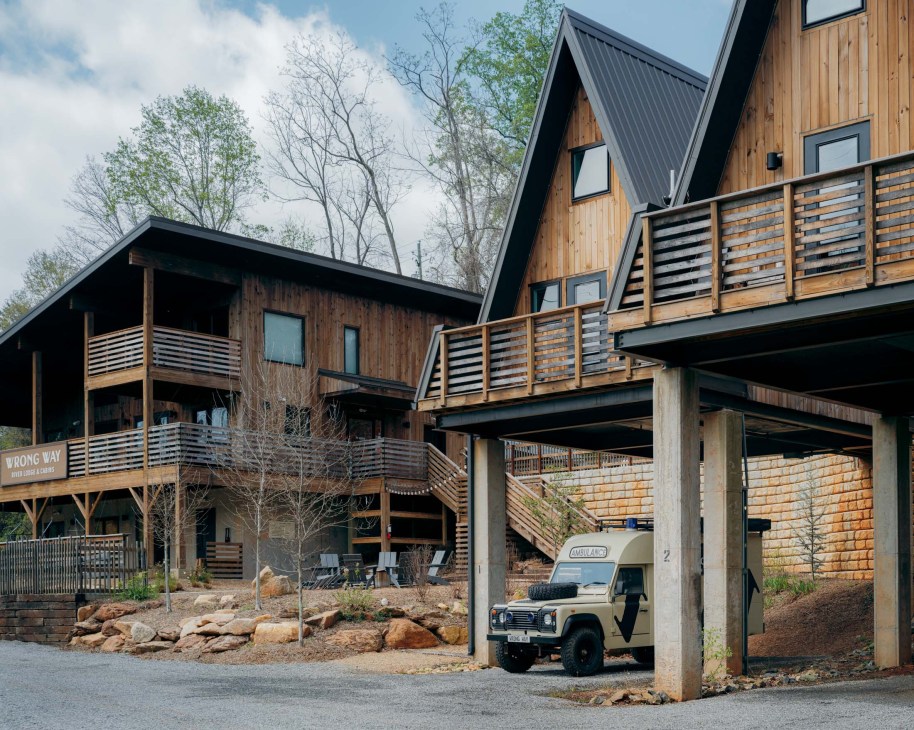

Western North Carolina contains some of the most abundant deciduous forests in the US and come October the hills around Asheville burst into a riot of fiery yellows, oranges and reds. “Most restaurants here, because of how dead January, February and March are, use these [autumn] months to kind of bank up, put cash aside to get through the winter,” says Meherwan Irani, chef-proprietor of Chai Pani, an Indian restaurant group that has helped to put Asheville on the culinary map. Visitor numbers were down 74 per cent in October 2024 compared to the previous year and 57 per cent in November. Six months after the hurricane, Asheville had an unemployment rate of 6 per cent (13,000 people) – the highest in North Carolina, according to the state’s Department of Commerce. “At last count, 21 independent restaurants had either closed or not yet reopened,” says Irani.
And yet, along with the river mud, Helene stirred up that particularly Appalachian spirit of can-do and compassion. Stories of strangers helping strangers are countless, as are those of the hospitality industry directing its resources towards those in need. “For two days after Helene hit, there was no communication – no internet, no cell phone,” says Irani. “So, a group of us was drawn almost magnetically downtown.” Irani was due to open Botiwalla, a small sister restaurant to Chai Pani, the day after the hurricane made landfall. Its downtown building was one of very few places not to lose power. “We looked at everything in the walk-in and our first instinct was… Well, I’m sure there’s a lot of hungry people around Asheville,” says Irani. “The co-owner of another restaurant comes in carrying a big tub of lamb and says, ‘What can you do with this?’”

Soon chefs and other hospitality staff were working in the Botiwalla kitchen in what Irani describes as “a kind of triage but with lamb”. When World Central Kitchen, a charity that helps distribute food to people in disaster areas, arrived on the scene days later, they flew a helicopter that would land and take off 10 times a day, bringing hot meals, many of which were prepared at Botiwalla, to people cut off by the flooding. A more traditional triage was established at Double Crown, a West Asheville bar owned by Chris Bower, who also runs the Eda Rhyne Distillery in Biltmore Village. “The bartenders created an emergency medical centre inside and outside of the bar,” says Bower, who, at two-metres-tall and with shoulder-length hair and a long beard, looks like a bluegrass banjo player. “The fire department was sending people there to get emergency care and prescriptions.” And just outside Marshall (a small riverside town about 30km from Asheville that was hit hard by Helene), Kevin Ward and Jeramy Stauffer, who together run the prefabricated home company Nanostead, decided that their hillside location would be a suitable stage for the relief effort. “We showed up a couple of days after the storm with our grill and some hot dogs,” says Ward, who is also heavily bearded. “Within a couple of days we had a kitchen set-up serving 1,500 meals a day.” The Marshall Relief Alliance, as Ward and Stauffer’s group came to be known, hosted dinners and musical evenings throughout the cold Appalachian winter and became a hub both for people seeking help and those looking to assist others.

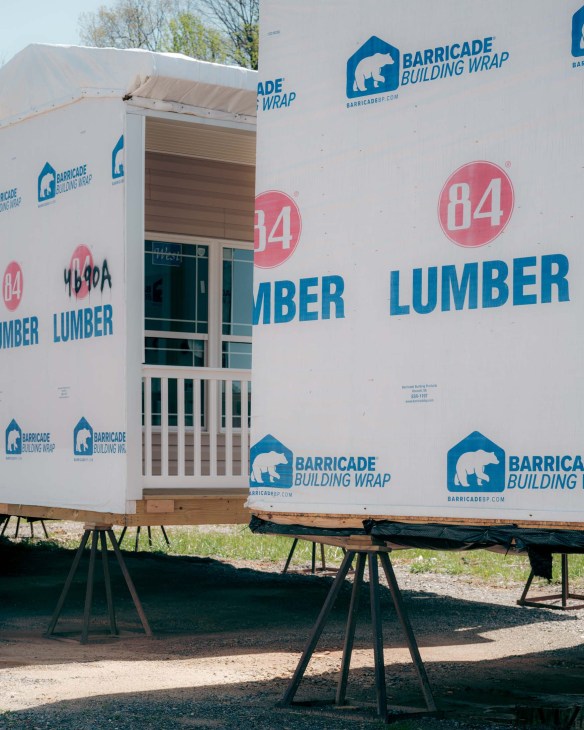
Autumn 2024 wasn’t only an inopportune time for Helene to hit from an economic perspective. The hurricane arrived towards the end of a particularly venomous US presidential election campaign and the disaster became a focal point for the forces feeding nationwide polarisation. On 2 October the then-president, Joe Biden, flew in a helicopter over the flood-hit areas. On 21 October the Republican candidate, Donald Trump, visited the town of Swannanoa, which was badly affected by Helene and is home to a poorer, more rural population than Asheville. Trump sought to amplify grievances related to the perceived ineffectiveness of the federal government and particularly the Federal Emergency Management Agency (Fema), which deals with natural disasters and their aftermath.
Rumours circulated online that Fema was intentionally withholding aid or diverting resources towards illegal immigrants at the Mexican border, and even that the Biden government had engineered the storm in order to seize the region’s lithium deposits. After Fema had to pause relief work in certain areas due to threats from local militia, Chuck Edwards, a Republican congressman who represents many of the worst-hit areas, penned an open letter intended to dispel the rumours. It included the line, “Hurricane Helene was NOT geoengineered by the government to seize and access lithium deposits in Chimney Rock… Nobody can control the weather.” Weeks later, Edwards stood behind Trump in Swannanoa as he repeated the falsehood that Fema was spending money meant for Helene on illegal immigrants.
Swannanoa town is still a site of devastation in April: roofs caved in, cars overturned and riverbanks strewn with debris. We meet Regae Eager and her husband, John Barnes, outside their home. They are replacing two rosebushes uprooted by the floods that were planted in memory of Eager’s mother and Barnes’s son. “We’re the only ones on this side that made it,” says Eager, her voice hoarse as she gestures towards what remains of her neighbours’ homes. Most of the people we have spoken to have been either positive or ambivalent about Fema’s response to the disaster but Eager heaps scorn on the agency. “We had no rescue, no warning,” she says. “The dam broke at the same time the reservoir stopped doing its job, so it was coming from up there and down there.” She points up the side of the valley and down towards the river.


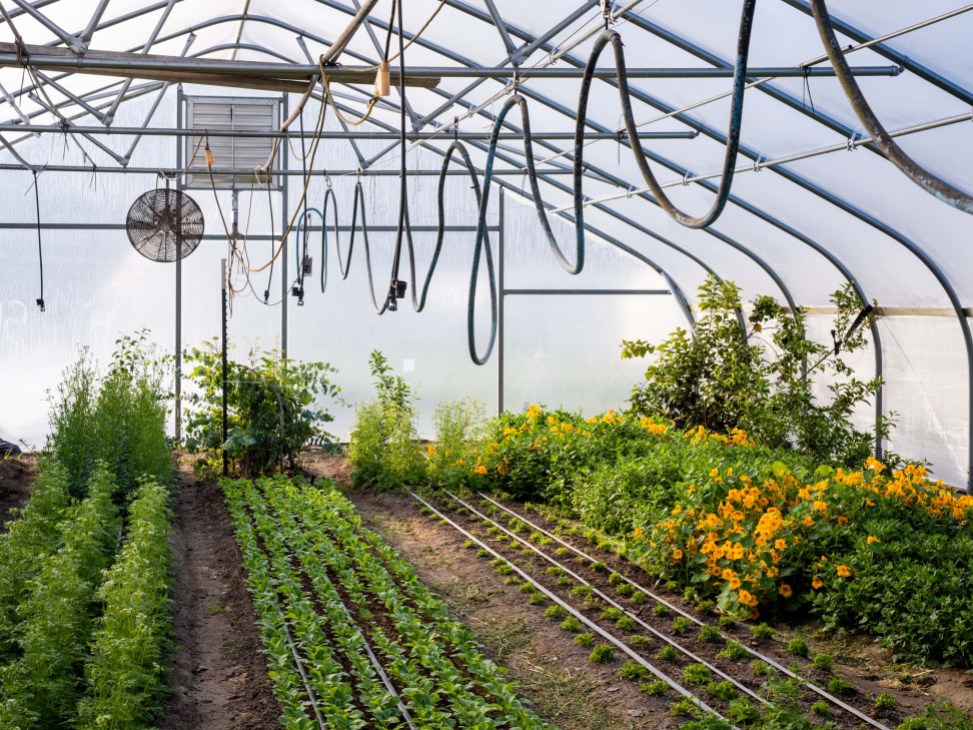
Whether or not Fema is responsible for the fact that some areas were cut off with no water or power for months and have still to receive much in the way of financial assistance, the situation hasn’t improved since Trump re-entered the White House. Indeed, many feel that it has got worse, with the new president’s threats to disband the agency hindering both its ability to continue working and the faith that people have in soliciting its help. Comments made by Trump and others have likely discouraged many from seeking federal assistance, which, experts say, could undermine the whole region’s recovery. Months after the storm, just 15 per cent of eligible North Carolina households had applied. The newly appointed Democratic governor of North Carolina, Josh Stein, announced on 23 May that the Trump administration had denied the state’s request for Fema to honour a Biden-era commitment to fund all debris removal.
The total cost of the damage in North Carolina is estimated at $60bn (€53bn), which is nearly double the state’s annual budget. But despite the work that still needs to be done, the overwhelming impression is that of a community brought together by the disaster, rather than torn apart. Appalachia is often characterised as an insular place, wary of outsiders, but everyone Monocle meets strongly hopes that visitors will start filling the region’s forests, rivers and bars again as soon as possible. “I have come across so many people who have intentionally visited this city to support us after the storm and that’s been really cool,” says Bower. “You know, so much of the messaging we get is so jaded and cynical but people care about people.”
A large part of downtown Asheville’s charm comes from its mix of independent businesses. Indeed, it seems unlikely that there would have been the same amount of cross-community support if huge corporations dominated the local commercial inventory. “Asheville has always been anti-national chains,” says Irani. “There isn’t a McDonald’s, there isn’t a Subway, there isn’t even a Starbucks…The first chain restaurant that came to downtown, in my memory, was a Baskin-Robbins. And you should have heard the hullaballoo around that.” Locals fear that the price of rebuilding quickly will be a compromise on some of the values that make Asheville so distinctive. “The biggest threat is gentrification by disaster,” says Ward. “There’s a culture of capitalising on situations like this, where people will come in and buy up the land.” But Irani is bullish on the city’s long-term prospects and believes that the reception spring tourists received bodes 1 well for the summer months. “Tourists coming into town now are being welcomed with open arms and treated as heroes,” he says, smiling.


Down at the RAD, the area of Asheville worst hit by Hurricane Helene, the mood too is one of dogged defiance. The skaters, who see themselves as four-wheeled pioneers of the neighbourhood’s reinvention from warehouse district into creative community in the late 1990s, are still here, coolly gliding back and forth across the concrete. And inside a large inflatable tent, the sound of serrated metal on wood cuts through the eerie calm. Mark Joseph Oliver runs Foundation Woodworks, an art gallery and community workshop that once occupied one of the large warehouse buildings devastated by Helene. “We had 18ft of water [in the studio],” he says. “I had about $40,000 (€35,189) worth of personal projects lost.” But as he surveys an assemblage of new machinery, some donated and some bought with grants, he smiles. “We’re still here doing it and we’ll be here for a while, because we love this place and we don’t know any other way.”
A few metres from where we’re standing, workers are beginning to rewire and paint a large building called the Marquee, which served as a covered market for local makers and artists. By the end of summer, it should be filled once again with the laughter and chatter of buyers and vendors. We notice some wooden sculptures on a table by Oliver’s workstation. “Those are some works that we rescued from the flood,” he says. They look remarkably intact, with perhaps a richer, more characterful patina for their time spent weathering the storm.


